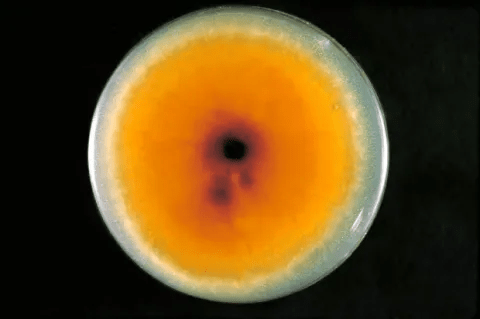‘GENTINAL super fungus’ is likely already in Britain and spreading, experts have warned.
Four people in the United States have already tested positive for a new, highly contagious fungal ringworm that spreads via sex.
3

3
The infection, known as trichophyton mentagrophytes type VII (TMVII), is also on the rise in Europe.
Ringworm, dubbed jock itch when it affects the groin, is a mould-like parasite that lives on the skin.
It spreads through close contact, typically during sex, with an infected person.
Despite its name, ringworm doesn’t have anything to do with worms.
The condition is not fatal but this new mutant strain is very hard to treat and can result in permanent scarring, experts have warned.
The first-ever case to be spotted in the US was detected in New York in July.
The infected individual turned out to be a man in his 30s who reported having sex with several men during a trip to England, Greece and California.
Since then four more cases have been spotted in the big apple, according to a recent report by the US Centre for Disease Control and Prevention (CDC).
All cases involved men aged 30-39 who had recently had sex with other men.
Infectious diseases expert at the University of Manchester, Dr David Denning, said it was “very likely that there are undetected cases” in Britain.
He told MailOnline: “Today if you had a rash on your chest or your back, you might not bother to deal with it for a week or two.
“If you were to go to a doctor and they prescribe something like a steroid or antibacterial cream but it doesn’t work, we could be looking at six to eight weeks since it began.
“But you could have transmitted it in the first two or three weeks to a partner or a friend that you gave a big hug to, went swimming with. They would then get it and you’d start a cycle.”
He said it was likely no more transmissable then other skin fungi but it is “very inflammatory”, meaning it results in a much worse rash.
Infectious diseases expert Dr Neil Stone also said it was “inevitably” going to spread across the world, including in Britain.
Ringworm: Everything you need to know
Ringworm is a common fungal infection that can cause a red or silvery ring-like rash on the skin.
Ringworm commonly affects arms and legs, but it can appear almost anywhere on the body.
Despite its name, ringworm doesn’t have anything to do with worms.
What does ringworm look like?
Signs typically appear between four and 14 days after your skin comes in contact with the fungi that cause ringworm, including:
- Circular, ring-shaped scales or plaques
- Flat patches with a raised, round border
- Itchy skin
- Hair loss or bald spots in the affected area
What does Trichophyton mentagrophytes genotype VII (TMVII) look like?
It can cause inflamed, painful, itchy, and persistent skin lesions, located on the genitals, buttocks, or face.
The rash can be red, itchy and scaly and have the potential to form pus-filled abscesses and scars.
What causes ringworm?
Despite its name, a fungus causes ringworm.
This type of fungus naturally lives on your skin, hair and nails. However, when their environment gets hot and damp, the fungi start growing uncontrollably.
You can get this infection anytime your skin comes into contact with the ringworm fungus on someone else’s skin.
How contagious is ringworm?
Ringworm is contagious. It can live on your skin, on surfaces and in soil. The main ways ringworm spreads are:
- Skin-to-skin contact with a person who has ringworm
- Contact with an infected dog, cat or animal (livestock or pets)
- Contact with a contaminated surface, such as a locker room floor or sweaty gym clothes
- Sharing objects with an infected person or animal such as a brush, towel or bedding
- Contaminated soil
How is ringworm treated?
Several nonprescription (over-the-counter) and prescription antifungal medications are available to treat ringworm.
Antifungals come in various forms like creams, gels or powders.
Your healthcare provider can treat more widespread ringworm with oral antifungal medication
All four men who tested positive for the bug did so between April and July 2024 after they saw rashes emerge on parts of their body, including their genitals, buttocks, face and trunk.
The rash can be red, itchy and scaly and have the potential to form pus-filled abscesses and scars, according to the USCDC.
Experts from New York University (NYU) who wrote the first report back in July warned this new “highly contagious” form of ringworm is a “potential public health threat”.
The new ringworm strain was first spotted in 2021, with cases initially emerging in Europe.
Last year, doctors in France reported 13 cases of the fungus according to a report published in the Journal of Emerging Infectious Diseases.
One of the patients was infected in Germany, where he lived, and three others had returned from travel to Slovenia, Spain, and India.
Lead author of the new report and dermatologist Dr Avrom Caplan, said: “Healthcare providers should be aware that Trichophyton mentagrophytes type VII is an emerging infection spread through sex.”

3




